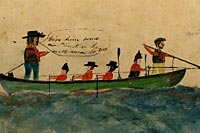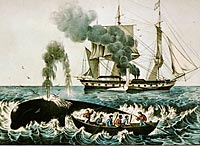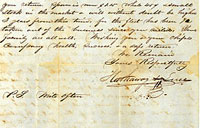For Teachers

Unit 1: Whaling in Four Lessons
Grade Level: 1-3
Unit Overview
In this unit students will become familiar with whaling in the 1800s, learning about what types of whales were hunted and where, the kinds of tools that were used and what life was like aboard a whaling ship.
Authors: Martha Stackpole, Lauren Keaney-Serpa, Elaine Barnett, Kristy Fletcher

Unit 2: At Sea: A History of Whaling
Grade Level: 4-5
Unit Overview
Archival collections at the Martha's Vineyard Museum document much of this rich history in ships' logs, business papers, and personal correspondence between captains and their families. This unit takes advantage of these revealing sources to tell the story of whaling in its most profitable years (1840 to 1860). Like seafaring itself, this unit is interdisciplinary. It includes lessons in economics, maps, shipboard culture, the exploitation of natural resources, and interpretation of texts. Students will learn the difference between primary and secondary sources and practice making meaning of surviving records and objects. Attention will be drawn to the biases of particular materials.
Author: Mary Jane Aldrich-Moodie

Unit 3: Can You Help Me, Mr. Postman?
Grade Level: High School
Unit Overview
In this unit, high school students begin to think about and reflect upon how our ability, or inability, to communicate long distances with loved ones has changed over time. Students will be asked to compare and contrast how individuals working on whaling ships in the mid-1800s communicated with those they left behind at home, with how soldiers serving in Iraq and Afghanistan in 2010 communicate with their families and friends back home.
Author: Dianne M. Norton